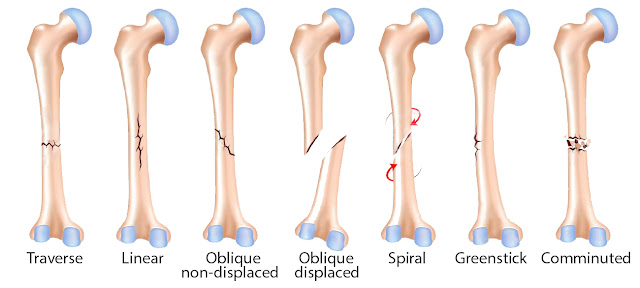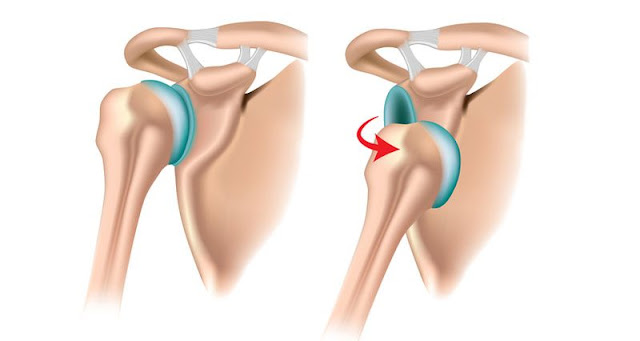Breaking of a bone is called fracture. This can simply be a crack in the structure of the bone or a complete break producing two or more fragments. There are different types of fracture.
Types of Fracture

- When it occurs without any wound it is called simple fracture.
It is caused due to breaking of bone at the right angle with the axis of the bone. In this type, the bone is broken by twisting motion. When the bone is broken into so many pieces or parts, it is called comminuted. In this type, the broken ends of bones are driven into the another. It is very common in small kids. The bone may crack and bend without breaking into pieces or parts.
- Pain at or near the fractured place.
- Tenderness or discomfort on gentle pressure over the affected area.
- Swelling about the fractured place.
- Loss of power; the injured part cannot be moved.
- Deformity of the limb; the limb may assume an unnatural position and be misshapen.
- Irregularity of the bone. If the fracture is near the skin the irregularity of bone may be felt.
- Unnatural movement at the fractured place.
- Immobilize the fractured bone.
- Stop bleeding, if any.
- Take the patient to doctor
- In case of compound fracture neither use any antiseptic nor wash the wound.
- It should be plastered by the doctor.
- Warm up properly.
- Sports Equipment should be of good quality.
- Use appropriate sports gear such as knee caps, elbow Guards, bandages etc.
- Avoid poorly maintained fields.
 It is an injury of joint in which adjoining bones are displaced from their original position. Dislocation is mainly caused due to direct or indirect impact over the joint. It may be simple dislocation, fractured dislocation or complicated dislocation.
It is an injury of joint in which adjoining bones are displaced from their original position. Dislocation is mainly caused due to direct or indirect impact over the joint. It may be simple dislocation, fractured dislocation or complicated dislocation.
- Sudden pain in the affected area.
- Loss of power and movement.
- Swelling at the affected part.
- May have some temporary paralysis of the injured limb.
- Pinching or cutting of blood vessels or nerves.
- There may be visible deformity if the dislocated bones lock in the dislocated position.
- Immobilise the joint and keep patient in comfortable position.
- Apply cold compression by ice packs to reduce pain.
- Provide support by using string and bandage.
- Patient should be handled by an expert doctor.
- After full treatment progressive rehabilitation exercises should be followed to restore the strength of the joint.
- Always obey the rules and regulations of the game.
- Avoid practicing during the fatigue.
- Always use protective gears while playing such as kneecaps, elbow guards, bandages etc.
- Proper warming up and conditioning should be done.
Tags fracture health injuries
